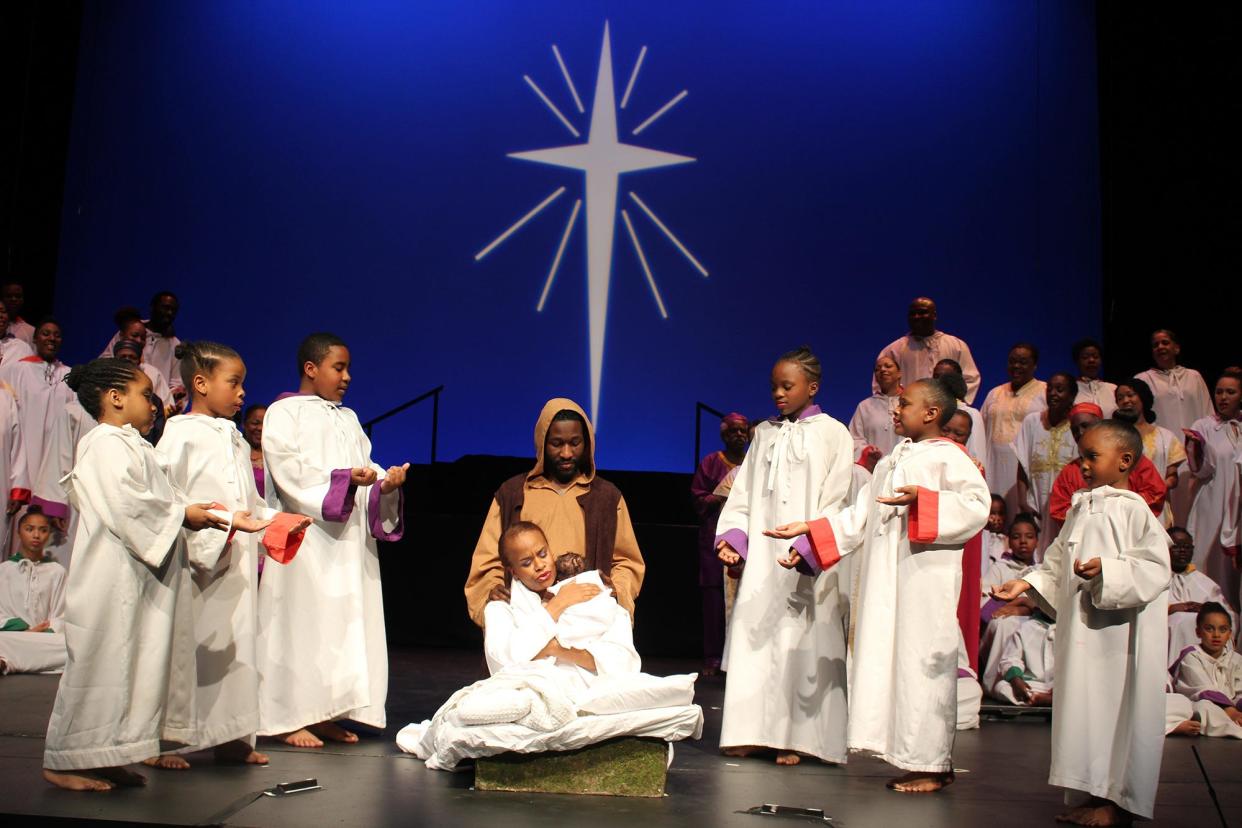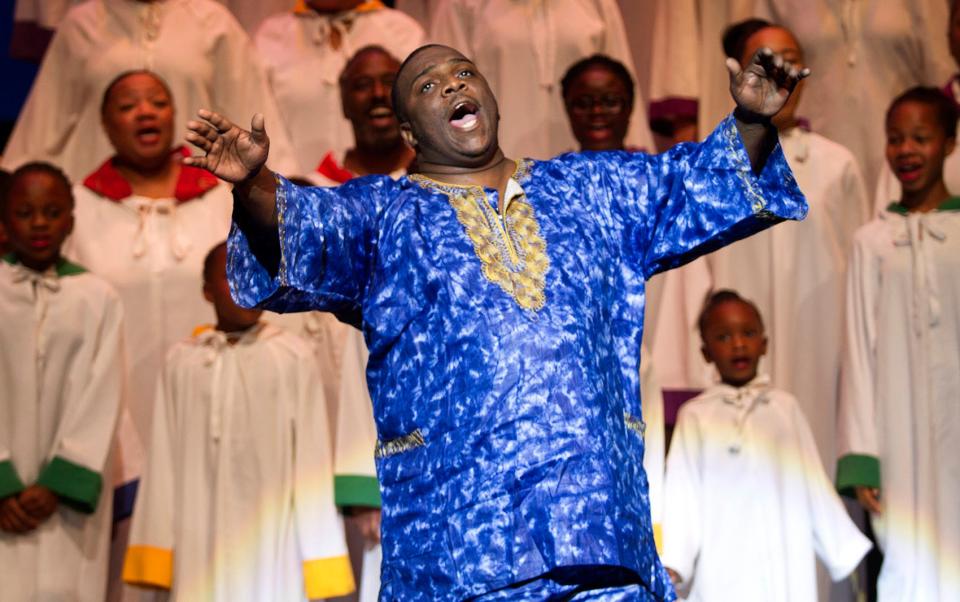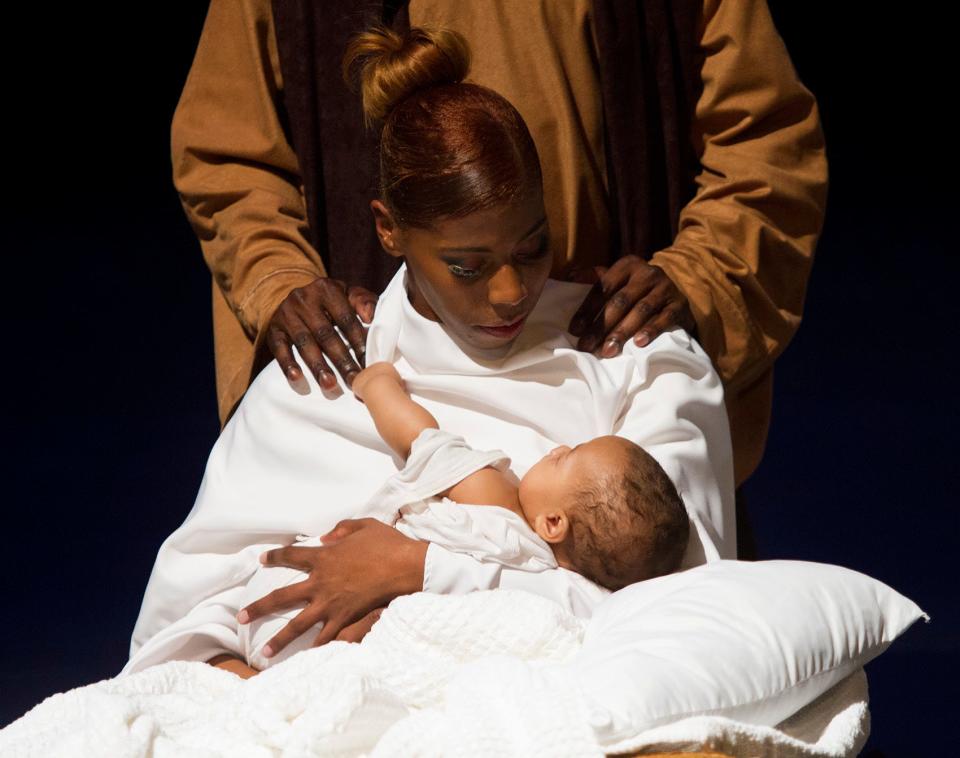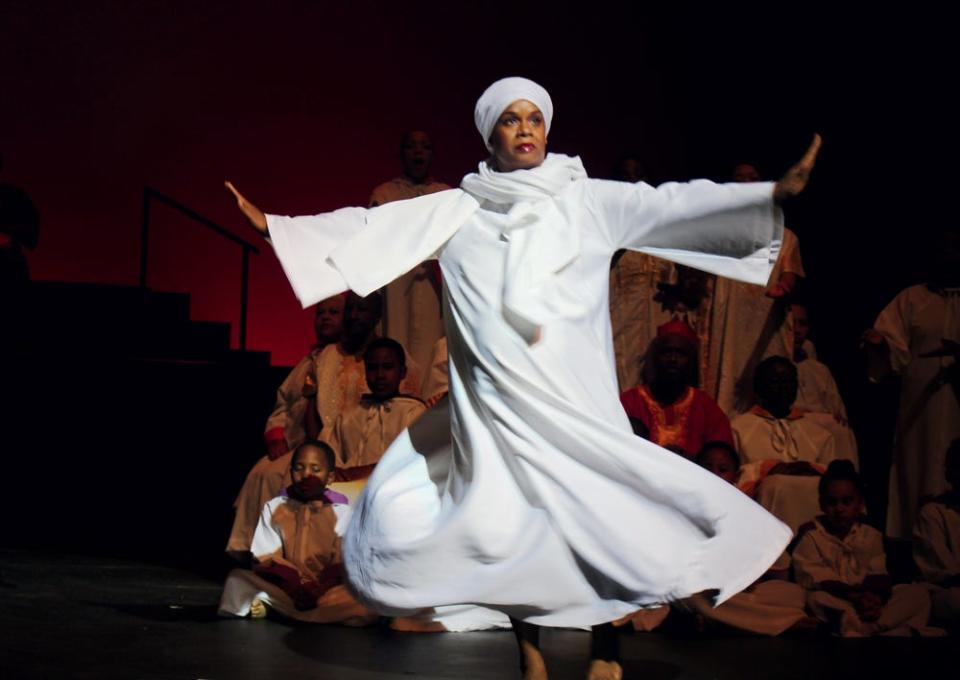'Black Nativity' comes to Mechanics Hall for first time with hopes of becoming a tradition

WORCESTER — "Black Nativity" by poet and playwright Langston Hughes first appeared as an Off-Broadway production in 1961.
There have been many performances nationwide and worldwide since, but the National Center of Afro-American Artists in Boston has had a tradition of putting on the musical annually since 1970 for its longest continuous run.
"Black Nativity," based on the Gospel of St. Luke, is a joyous retelling of the Nativity story in Black vernacular speech and featuring drama, stunning dance, African drumming and adults and children lifting their voices in song.
Now the National Center of Afro-American Artists and Mechanics Hall are combining to bring that tradition to Worcester for the first time with performances at 3:30 and 7:30 p.m. Nov. 27 in Mechanics Hall.
"I think I could say very fairly there are families for whom 'Black Nativity' has become a seasonal event," said Edmund Barry Gaither, executive director of the National Center of Afro-American Artists, during a Zoom interview Nov. 5 with "Black Nativity" registrar Betty Hillmon.
"I hope there will be those coming in Worcester who will so enjoy this that they will want to make it a family tradition for their Christmas coming forward," he said.
The NCAAA production has some unique features, including a stunning dance by Mary leading up to the birth of baby Jesus, and an actual baby cast as Jesus.
Langston Hughes (1901-67) "was interested in gospel and jazz as music forms and he was interested in black speech — colloquial speech, vernacular speech for Black people," Gaither said.
Hughes put that language in "Black Nativity."
"There is this familiarity and intimacy in the language that mediates the space of the rather formal language of the gospel," Gaither said.
When "Black Nativity" ran Off-Broadway in 1961, it was one of the first works written by an African-American to be staged there. Besides the narration, traditional Christmas carols were sung in gospel style, with a few songs created specifically for the show. However, Hughes felt the production could be improved musically. Its script contained the spoken text, indicating where music should be placed, but did not specify precisely what most of the music should be, other than the original songs.

Subsequent renditions of "Black Nativity" evolved, with more music and the introduction of children singers. Soloists and the adult and children's choir sing Christmas carols, gospel songs and folk spirituals.
Gaither was in on the Boston production from the start and saw the musical adaptations being made.
"Our adaptation set arrangements for children and that added a lilt and a bit of a feeling of innocence that only children could bring," he said.
Hillmon, a music educator, has also worked on various aspects of the Boston NCAAA "Black Nativity" for a number of years.
At rehearsals, "I get to hear the singing," she said. "Every season I hear the singing. It's amazing to me that it's quite exciting and your inner being is touched. And it happens not just to me but to people who attend the performances, Black or white. The piece, when you hear the music, it moves you. What moves you is the strength of Black American folk music."
"We may be the only production on our scale that gives a focus on the religious side of Christmas," she said.

The birth of Jesus begins with a dance between Mary and Joseph as Joseph is trying to find a place for Mary to bear the child, Gaither said.
"Mary and Joseph begin the dance. She already starts to go into labor." Then in a solo dance, the labor is conveyed "in an extraordinary choreography" as well as percussion that builds to a crescendo, Gaither said. Mary "spins, turns, and with her back to the audience delivers the baby Jesus." The lights dim, there is silence, and then the audience sees "Mary and Joseph with the Christ child …
"If you see it once you will never forget it. I'm not aware of any production where you see the labor and the delivery," Gaither said.
The total cast is about 70 to 75, with one-third children and two-thirds adults. There are eight to ten musicians.

With regard to casting, the NCAAA production of "Black Nativity" has had white adults at rehearsals, "But basically it's been a Black cast," Hillmon said. The white prospective cast members "didn't stay."
Since 1970," Black Nativity" has been put on at several locations in Boston, most recently at Emerson College's Paramount Center where there will be performances this year Dec. 3-19.
"That has been a very valuable and beautiful collaboration," Hillmon said.
Each production is different every year, Gaither and Hillman noted.
"It isn't repeating the same thing over and over. It's innovation within tradition," he said.
"The choral group — they improvise and change every year," Hillmon said.
"The outline of it does not change," said Gaither. "It's ultimately the same story, but the telling is all infused with incredible joy."
Last year the telling was different for a different reason. Due to COVID-19, the NCAAA held a virtual gala reception and auction featuring the premier screening of "Black Nativity: 50 Years of Triumph and Transition," a video remembrance in lieu of its traditional live performances.
Now "Black Nativity" is back live and in-person in Boston and debuting in Worcester.
"There has been a long interest in doing 'Black Nativity' in other venues," Gaither said.
There have been several talks about NCAAA and Mechanics Hall combining for the musical, he said.
The music of "Black Nativity" was recorded in Mechanics Hall last spring as part of Boston production's 50th anniversary recognition, helping further pave the way forward.
Kathleen M. Gagne, executive director of Mechanics Hall, said, "I unabashedly love this time of year, the season of thankfulness and hope, of comfort and joy. It seems that most of the world, regardless of race or creed, celebrates the coming of light, with its promise of joy and which compels the goodness within us to step out of the darkness. The collaboration with the National Center of Afro-American Artists has taken a few years to become real here in Worcester, and I am thrilled."
The pandemic, of course, has not gone away, and transportation will have to be organized to take children in the cast from Boston to Worcester as well as other arrangements involved in bringing the production here.
At the Zoom interview on Nov. 5, Hillmon said, "We have children (for the production), not as many as we want to have. But they're very exciting children."
Parents have questions, Gaither said. "They're thinking on it. They don't say no."
Hillmon, as registrar of "Black Nativity," manages the children in the production.
"I always think of her as the anchor of the education (of these young children)," said Gaither.
"The children, they learn through the adults," Hillmon said. "It happens just automatically. We don't say, 'Watch them and do that.' No, no. They just do it."
The ages of children in "Black Nativity" range from 5 or 6 to high school. Often it is a tradition being handed down from when older relatives were in the show.
For children, "The most difficult thing in 'Black Nativity' is not the singing, it's sitting still while they wait their turn," Hillmon said. The children are on stage throughout. However, "They do that well," she said.
But the youngest cast member in the show will be much younger than the children.
The child playing the Christ child is only weeks old.
"One of the things I start searching early is who's having a baby," Hillmon said.
"We always have a baby Jesus. You don't know if this baby is going to be a cranky new one," said Gaither.
"You cross your fingers," Hillmon said.
"In all the years I've gone to 'Black Nativity,' the audience is holding its breath to see if the little hand or arm moves. That's the first indication it's not a doll," Gaither said.
People in Mechanics Hall will be sure to be watching closely for that reason and many others.
"'Black Nativity' is a creation of one of America’s most important poets of the 20th century, Langston Hughes. His nativity story emphasizes the joy of the season and surrounds us with an abiding peace," Gagne said.
"It is a message we long to hear every year, but this year, as we re-emerge from the COVID restrictions on gathering together, it is especially poignant. It is my hope that 'Black Nativity' becomes a Worcester classic and generational tradition. It aligns perfectly with a strategic goal to bring more experiences that offer artistic excellence and cultural relevance to our stage."
Hillmon is no stranger to the venerable concert hall, and has conducted a youth community orchestra there.
"First of all, Mechanics Hall is a wonderful place … Coming into Worcester is exciting to us," she said.
Gaither said, "It allows us to extend the mission idea of a gift to people of goodwill and hope and joy to people of all faiths."
'Black Nativity'
When: 3:30 and 7:30 p.m. Nov. 27
Where: Mechanics Hall, 321 Main St., Worcester
How much: $55 and $45. For tickets and more information, including COVID protocols, visit www.mechanicshall.org. For more information about National Center of Afro-American Artists, visit www.ncaaa.org.
This article originally appeared on Telegram & Gazette: Langston Hughes' 'Black Nativity' Worcester debut at Mechanics Hall

